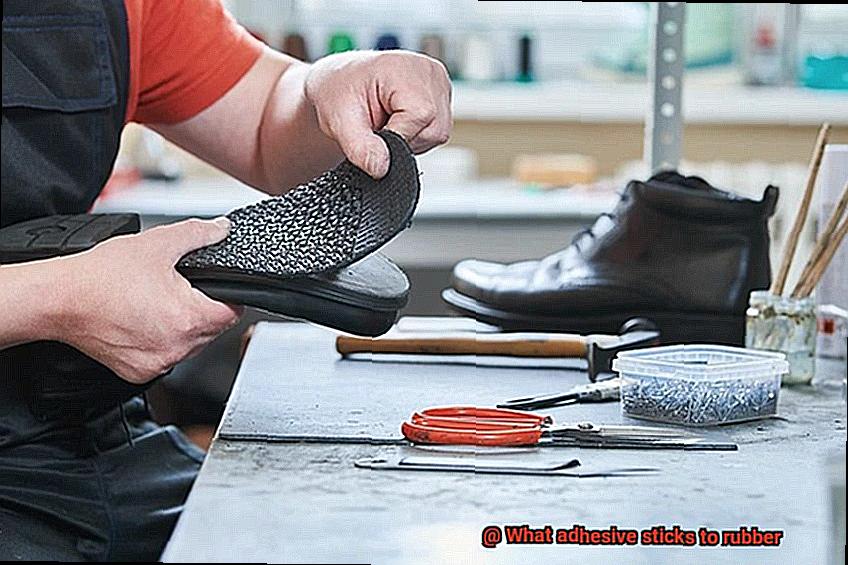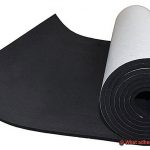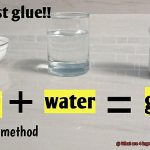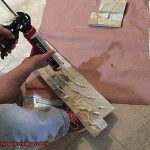Imagine this: you’re knee-deep in a project that involves rubber. Maybe you’re fixing up your favorite pair of worn-out sneakers, patching up a leak in your trusty inflatable kayak, or crafting a one-of-a-kind rubber sole for your dream DIY creation. As you scramble to find the perfect adhesive, you can’t help but wonder, “What adhesive sticks to rubber?”
Don’t fret, my fellow adhesive enthusiasts. In this captivating blog post, we’re about to dive headfirst into the mesmerizing world of adhesives. We’ll uncover the secrets behind which ones have the power to bond and hold tight onto that ever-versatile material: rubber.
But why is finding the right adhesive so crucial? Well, let me tell you – rubber has some unique characteristics that can make it quite a challenge to work with. Its non-porous nature, durability, and flexibility make it resistant to traditional bonding methods. But fear not. That’s where the marvel of adhesives comes into play.
Within the realm of adhesives, we’ll explore an array of remarkable options that can create strong bonds with rubber. From versatile super glues that tackle small-scale fixes like a boss, to specialized contact adhesives designed for heavy-duty industrial applications – we’ve got it all covered. Prepare yourself for groundbreaking solutions that will blow your mind.
But wait… there’s more. Throughout this journey, we’ll unravel the secrets behind key factors to consider when selecting the perfect adhesive for your rubber-based project. Whether it’s understanding the specific type of rubber you’re working with or taking into account the environmental conditions your project will face – we’ve got your back. By the end of this adventure, you’ll be armed with all the knowledge needed to make an adhesive choice that’s as solid as steel.
So whether you’re a DIY enthusiast or a seasoned pro, get ready to unlock the magic of adhesion as we plunge into the world of rubber-compatible adhesives. Stay tuned for our upcoming blog posts, packed with practical tips, mind-blowing tricks, and eye-opening insights that will turn your adhesive dilemma into a triumphant project success story.
Cyanoacrylate (Super Glue): The Most Commonly Used Adhesive for Bonding Rubber
Contents
- 1 Cyanoacrylate (Super Glue): The Most Commonly Used Adhesive for Bonding Rubber
- 2 Epoxy: A Durable and Strong Adhesive for Bonding Rubber Parts
- 3 Silicone Adhesives: Specialized Formulation for Bonding Silicone Rubbers
- 4 Other Options for Bonding Rubber: Polyurethane, Neoprene-Based, and Solvent-Based Adhesives
- 5 Surface Preparation: Clean the Rubber Surface Before Applying the Adhesive
- 6 Curing Time: Allow Sufficient Time for the Adhesive to Fully Bond
- 7 Different Types of Rubber Require Different Adhesives
- 8 Testing the Adhesive on a Small Area Before Applying It to a Larger Surface
- 9 Conclusion
In the world of rubber bonding, one adhesive reigns supreme – cyanoacrylate, better known as super glue. This remarkable adhesive has earned its place as the most commonly used adhesive for bonding rubber, thanks to its unique characteristics and undeniable advantages.
When it comes to bonding rubber, time is often of the essence. That’s where cyanoacrylate shines with its rapid bonding capabilities. In a matter of seconds, this fast-acting adhesive forms an incredibly strong bond between rubber surfaces, ensuring a quick and efficient bonding process.
But how does cyanoacrylate achieve such impressive bonding results? It all comes down to moisture-activated curing. As a type of acrylic resin, cyanoacrylate undergoes rapid polymerization when it encounters moisture. This means that the moisture present on the rubber surface initiates the curing process, allowing the adhesive to bond effectively and securely.
The versatility of super glue is another reason why it is the go-to adhesive for rubber bonding. It works seamlessly with various types of rubber, including natural rubber, synthetic rubber, and elastomers. Whether you need to bond rubber to rubber or rubber to other materials like metal, plastic, or wood, cyanoacrylate gets the job done with ease.
Applying cyanoacrylate is a breeze as well. Before diving into the bonding process, it’s crucial to ensure that the rubber surfaces are clean and free from any dirt, oil, or moisture. Once prepared, a small amount of adhesive is applied to one surface before being firmly pressed against the other surface. Instantly, a strong bond is formed, ready to withstand whatever challenges come its way.
However, it’s important to note that cyanoacrylate adhesives may not work well on certain types of rubber. Silicone rubber and fluorinated rubbers, for example, require specialized adhesives tailored to their unique properties. In such cases, it’s essential to use adhesives specifically designed for these rubber types to ensure optimal bonding results.
Epoxy: A Durable and Strong Adhesive for Bonding Rubber Parts
Rubber parts are ubiquitous in our daily lives, from the soles of our shoes to the tires on our cars. When it comes to securely bonding these rubber parts together, epoxy adhesives emerge as the formidable superhero. Let’s delve into why epoxy is the unrivaled champion when it comes to bonding rubber parts.
The Dynamic Duo: Resin and Hardener:
Epoxy adhesives boast a powerful two-component system comprising a resin and a hardener. These components, when mixed in precise ratios, activate the adhesive properties of epoxy. This remarkable combination results in an adhesive that can withstand even the harshest conditions, making it unbeatable in durability and strength.
Versatility at its Finest:
Epoxy adhesives showcase unparalleled versatility, capable of bonding a wide array of materials, including rubber. Whether you need to join rubber to metal, plastic, or wood, epoxy rises to the challenge. This adaptability positions epoxy as the premier choice for various applications where secure bonding of rubber parts is essential.
Penetrating Power:
Renowned for their exceptional adhesion properties, epoxy adhesives possess the remarkable ability to penetrate rubber surfaces. By chemically reacting with the rubber molecules, epoxy creates a robust bond that permeates through the material. This deep penetration ensures an enduring and long-lasting connection that never falters.
Finding the Perfect Match:
Not all epoxy adhesives are created equal when it comes to bonding rubber. Specific types of epoxy adhesives are meticulously formulated for rubber bonding applications. Thus, selecting the appropriate epoxy adhesive tailored to your specific needs is crucial for achieving optimal results.
Preparation is Key:
To unlock the full bonding strength potential of epoxy adhesives, meticulous surface preparation is paramount. This entails thorough cleaning and roughening of the surfaces to enhance adhesion. Certain epoxy adhesives may necessitate the use of a primer or surface treatment to further augment bonding. By diligently following the manufacturer’s instructions, you can ensure impeccable results.
Silicone Adhesives: Specialized Formulation for Bonding Silicone Rubbers
In this section, we will explore the unique properties and capabilities of silicone adhesives that make them the perfect match for silicone rubbers.
Silicone rubbers, with their low surface energy, can be a tough nut to crack when it comes to adhesive bonding. Regular adhesives struggle to adhere effectively to these surfaces. But fear not, for silicone adhesives have been developed with a unique formulation that conquers this obstacle.
These superhero adhesives are designed with a high affinity for silicone rubber surfaces. This means they form strong and durable bonds that withstand the test of time. No more worries about your silicone parts coming apart at the seams.
The versatility of silicone adhesives is another reason why they are a favorite among adhesive enthusiasts. They come in various forms such as liquids, pastes, gels, and films, catering to different bonding requirements. Whatever your project demands, there’s a silicone adhesive waiting to meet your needs.
But hold on tight, because there’s more. Silicone adhesives offer excellent resistance to extreme temperatures, chemicals, moisture, and even UV radiation. This makes them the go-to choice for a wide range of applications. From automotive components to electronic devices, these adhesives have got you covered.
Flexibility and elasticity are key features that set silicone adhesives apart. They allow for movement and expansion of bonded silicone parts without compromising the strength of the bond. Say goodbye to rigid connections that snap under pressure.
Let’s talk about the curing process now. Silicone adhesives can cure in different ways depending on the specific formulation and application requirements. Some may require heat or moisture for curing, while others can cure at room temperature. It’s essential to follow the manufacturer’s instructions to ensure optimal bonding results.
Before you dive into the adhesive action, be sure to prepare your surfaces properly. Cleanliness is key to achieving strong adhesive bonds with silicone rubber. Ensure that the surfaces are clean, dry, and free from any contaminants or residues. A little preparation goes a long way in ensuring successful bonding.
Other Options for Bonding Rubber: Polyurethane, Neoprene-Based, and Solvent-Based Adhesives
Prepare to embark on an adhesive adventure as we delve into the world of rubber bonding. In our previous chapter, we uncovered the remarkable abilities of silicone adhesives in conquering silicone rubber. But what about other rubber types? Fear not, for today we shall uncover the strength and versatility of three other formidable options: polyurethane, neoprene-based, and solvent-based adhesives. These adhesives possess unique characteristics that make them the ultimate allies in bonding rubber. Join us as we explore their advantages and considerations, and find the perfect adhesive hero for your needs.
Polyurethane Adhesives – Flexibility Meets Strength:
Flexibility and strength intertwine in the mighty realm of polyurethane adhesives. These heroes are renowned for their ability to create robust bonds that endure extreme temperatures, water, oil, and chemicals. Whether in liquid, paste, or foam form, polyurethane adhesives require meticulous surface preparation and a curing time to achieve their full strength. Patience is key when harnessing their power – follow the manufacturer’s instructions for optimal results.
Neoprene-Based Adhesives – Resistance is Futile:
Neoprene-based adhesives bring forth their undeniable resistance when bonding rubber surfaces. Neoprene, a synthetic rubber known for its resilience against oil, weathering, and aging, forms an unyielding bond with rubber. These stalwart adhesives excel in applications requiring high heat resistance, chemical resistance, and moisture resistance. Available in liquid or spray form, neoprene-based adhesives may require a curing time to unleash their full potential. Gear up and grant them the time they need to work their magic.
Solvent-Based Adhesives – Instant Bonding Superstars:
For those seeking instant bonding action, look no further than the heroes of solvent-based adhesives. These adhesives contain solvents that dissolve rubber surfaces, enhancing adhesion like never before. Known for their exceptional strength and durability, solvent-based adhesives can withstand the harshest environmental conditions. However, be prepared for their potent odors and ensure proper ventilation during application. Remember, great power comes with great responsibility.
Surface Preparation: Clean the Rubber Surface Before Applying the Adhesive
Today, we embark on an exhilarating journey into the realm of rubber bonding. We have already marveled at the incredible capabilities of polyurethane, neoprene-based, and solvent-based adhesives, but now it’s time to unveil the secret behind their unrivaled success: meticulous surface preparation. In this section, we will explore why cleaning the rubber surface before applying adhesive is paramount for achieving sturdy and enduring bonds. So, gather your cleaning arsenal and let us commence.
Why Clean the Rubber Surface?
Picture this: attempting to connect two pieces of rubber with adhesive while they are coated in grime, dust, or oil. Not a pretty sight, is it? This is precisely why cleaning the rubber surface is of utmost importance. Let’s delve deeper into the reasons why:
Contaminants Sabotage Adhesion:
The presence of dirt, dust, or oil on the rubber surface acts as a formidable barrier between the adhesive and the rubber substrate. This barrier hinders the adhesive’s ability to form a strong bond with the rubber and compromises its efficacy. By cleaning the surface, you eliminate these pesky obstacles and create an immaculate canvas for a triumphant bond.
Optimal Bonding Strength:
Adhesives thrive when they establish intimate contact with the surfaces they are uniting. By cleaning the rubber surface, you ensure direct contact between the adhesive and the rubber substrate. This maximizes the adhesive’s potential to engineer robust bonds capable of withstanding even the most arduous circumstances.
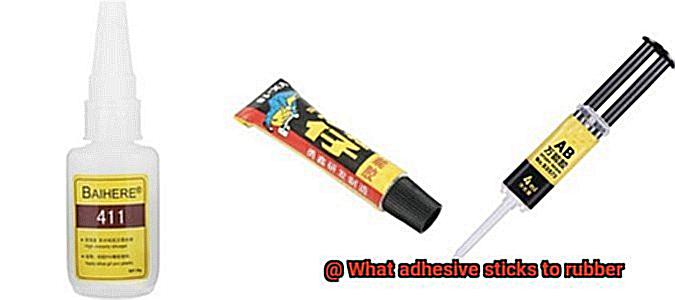
The Cleaning Process:
Now that we comprehend the significance of cleaning, let us discuss the actual cleansing procedure. Brace yourselves for these essential steps:
Gentle Cleansing:
Initiate the process by delicately wiping down the rubber surface with a clean cloth or sponge drenched in a mild detergent solution. This gentle approach eradicates loose dirt or debris without causing harm to the rubber. Remember, we aspire to be benevolent heroes, not malevolent villains.
Thorough Rinsing:

After wiping the surface, rinse it meticulously with copious amounts of clean water. This ensures the complete removal of any detergent residue. We cannot afford to leave behind any soap remnants, as they can undermine the adhesive’s bonding properties.
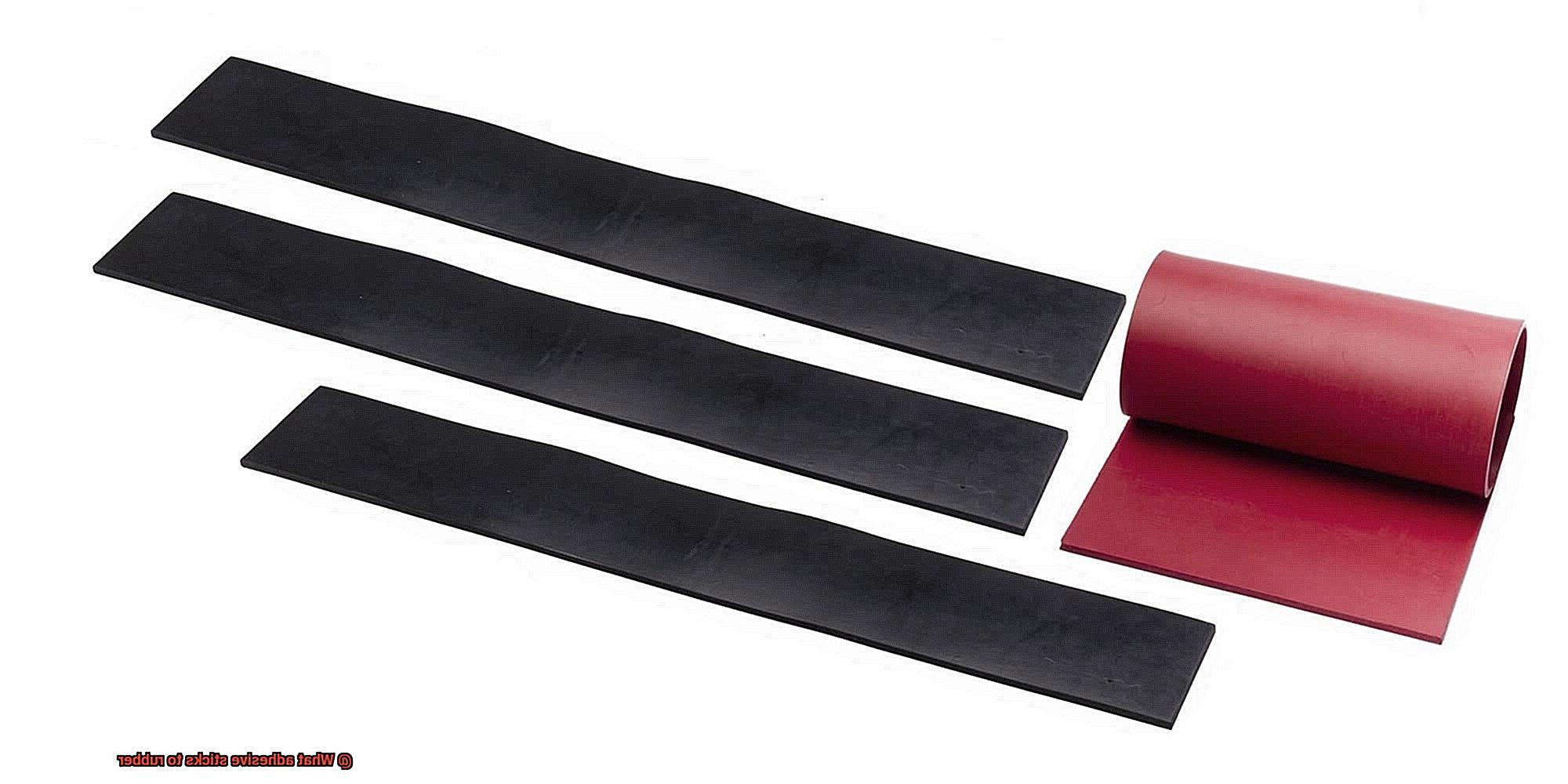
Curing Time: Allow Sufficient Time for the Adhesive to Fully Bond
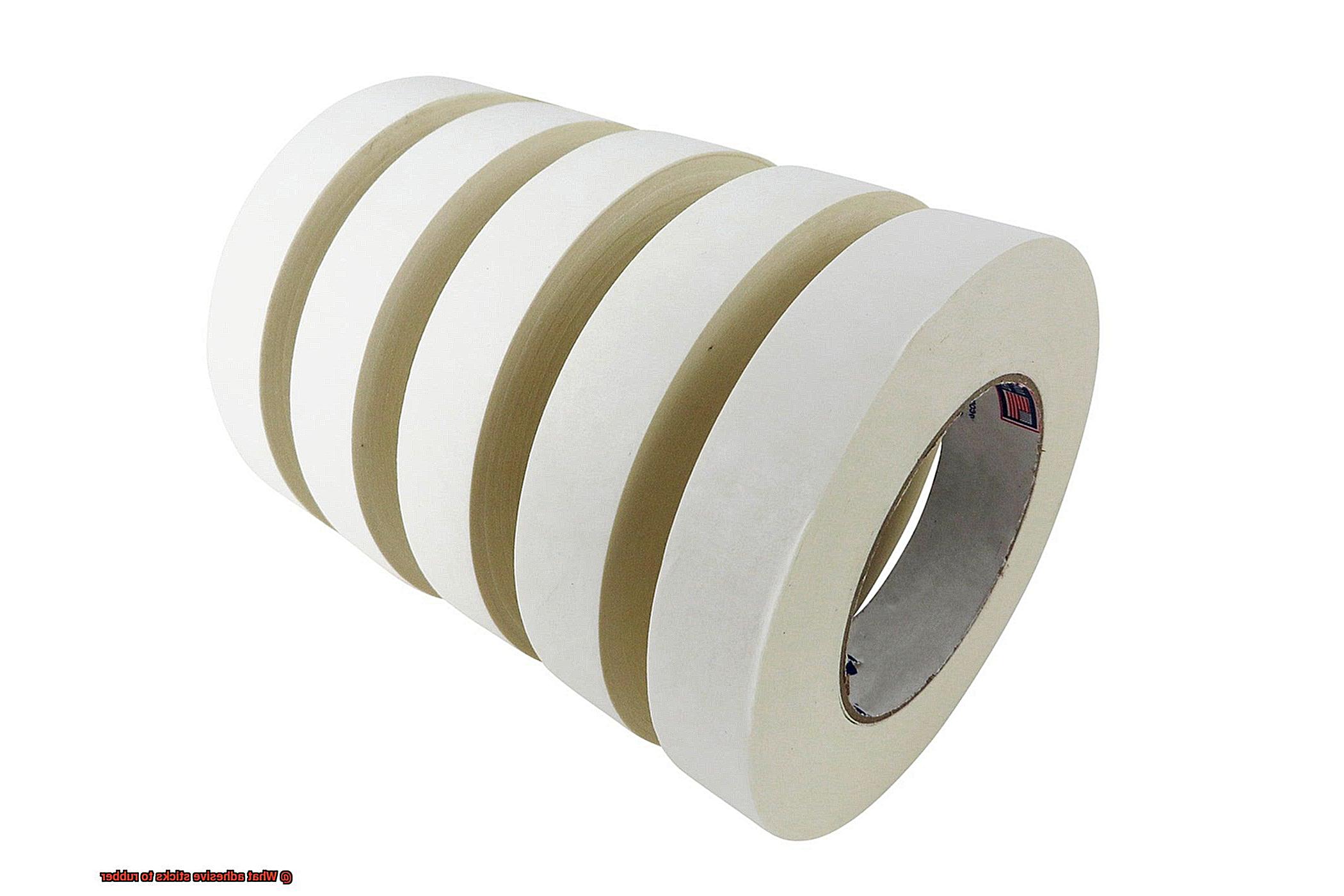
Imagine the satisfaction of flawlessly adhering two surfaces together, creating a bond that is unbreakable. However, this achievement requires one crucial ingredient: patience. In this exploration of curing time, we will delve into the importance of allowing adhesives to fully bond. So, sit back, relax, and let’s uncover the secrets behind achieving maximum strength through sufficient curing time.
Understanding Curing Time:
Curing time is the period during which an adhesive reaches its pinnacle of strength, forming bonds that can withstand the test of time. It’s akin to the slow simmering of a delectable stew, where every minute counts in enhancing its flavors. Rushing this process would be like serving an undercooked meal – unsavory and unsatisfying.
Adhesive Variations:
Adhesives are as diverse as the materials they bond, and each type has its own unique curing time. Therefore, it is vital to meticulously follow the manufacturer’s instructions for the specific adhesive you are using. When it comes to bonding rubber, be prepared to exercise a little more patience compared to other materials. Rubber’s low surface energy poses a challenge for adhesives, requiring extra time for a strong connection.
Ensuring Maximum Strength:
The curing process is where the magic happens – chemically reacting with the rubber surface to form unyielding bonds. By allowing ample curing time, you guarantee that the adhesive fully bonds and achieves its maximum strength. Patience becomes the secret ingredient for creating bonds that can withstand even the harshest conditions.
The Dangers of Rushing:
Impatience may be tempting, but rushing the curing process can yield disastrous results. A hasty bond is like trying to solve a puzzle by forcing two mismatched pieces together – it may hold briefly, but will eventually crumble under pressure. Take the time to let the adhesive form robust bonds, ensuring longevity and reliability.
Factors Affecting Curing Time:
Curing time is influenced by various factors that demand consideration. Temperature, humidity, and the thickness of the adhesive layer all play a role in determining how long it takes for the bond to fully develop. Higher temperatures and lower humidity levels can accelerate the curing process, while lower temperatures and higher humidity levels may slow it down. Keep these factors in mind to optimize your bonding results.
Different Types of Rubber Require Different Adhesives
Rubber is a remarkable material that finds its way into countless applications, from industrial machinery to everyday household items. However, not all rubber is created equal, and achieving a reliable bond requires understanding the unique properties of each type. In this exploration, we will uncover the reasons behind the necessity for different adhesives when bonding different types of rubber.
Decoding the Chemistry of Rubber:
Rubber encompasses a diverse range of materials with varying chemical compositions, leading to distinct adhesive requirements. Natural rubber, derived from the latex sap of rubber trees, possesses exceptional elasticity and tear resistance. However, its high molecular weight and low surface energy pose challenges for effective bonding. Synthetic rubbers, such as neoprene and silicone, further complicate matters with their own chemical structures and properties.
Taming the Wild Nature of Natural Rubber:
Natural rubber’s inherent stretchiness and tear-resistance make it an ideal choice for demanding applications like tires and shoe soles. Yet, bonding natural rubber demands an adhesive capable of withstanding its constant stretching and flexing. Enter solvent-based adhesives like neoprene or contact adhesives, renowned for their flexibility and robust bonding strength that seamlessly unite natural rubber.
Synthetic Rubbers: The Quest for Compatibility:
Synthetic rubbers, like neoprene and silicone, deviate from natural rubber in terms of chemical composition and performance characteristics. Neoprene, prized for its resistance to oil, heat, and weathering, necessitates an adhesive that can endure these challenging conditions. Specialty neoprene adhesives are expertly formulated to establish resilient bonds with this formidable synthetic rubber.
Silicone: The Slippery Enigma:
Silicone rubber’s exceptional resistance to extreme temperatures and non-stick nature make it a go-to material for specialized applications. However, bonding silicone rubber poses a unique challenge due to its low surface energy. To surmount this obstacle, silicone-based adhesives or RTV silicone sealants are specifically engineered to forge durable bonds with silicone rubber, ensuring reliability in demanding environments.
Surface Preparation: The Foundation of Bonding:
While adhesive selection is critical, proper surface preparation sets the stage for successful bonding regardless of rubber type. Thoroughly cleaning the rubber surface and eliminating contaminants like dirt and oils are essential steps. Some adhesives may necessitate additional techniques such as roughening or priming the surface to enhance adhesion. Adhering to manufacturer instructions and allowing adequate curing time further enhances the bond’s strength and longevity.
Testing the Adhesive on a Small Area Before Applying It to a Larger Surface
Today, we unveil the importance of putting adhesives to the test on a small area before entrusting them with your prized rubber surface. So, gear up with lab coats and safety goggles as we embark on this scientific adventure.
The Power of Compatibility
In the vast universe of adhesives, no two are alike. Each adhesive possesses its own distinct traits and attributes. Hence, testing an adhesive on a small area is paramount before committing to a full-scale application. This crucial step allows us to gauge whether the adhesive and rubber material are destined for harmonious bonding or doomed for adhesion failure.
The Quest for the Perfect Test Area
When selecting where to conduct your adhesive trial, think small and inconspicuous. Seek out an underside or corner of the rubber surface, where any potential damage or discoloration can remain hidden. It’s akin to discovering a secret hideaway for your delectable snacks – tucked away from prying eyes.
Preparing for Triumph
Before diving into the adhesive affair, take a moment to pamper and prepare the test area. Bid farewell to dirt, oil, and other contaminants that can sabotage the bonding process. Treat your rubber surface to a rejuvenating spa session – a little TLC goes a long way.
Guiding Principles for Success
Now that you’ve set the stage for adhesive greatness, let’s talk about following guidelines. I know, it’s tempting to rebel against these pesky rules and forge your own path. But hold on. Each adhesive comes with its own playbook – curing times, application techniques, and compatibility with rubber materials. Embrace your inner detective and scrutinize those manufacturer’s instructions.
Unleashing the Adhesive Magic
Armed with the knowledge from the manufacturer’s instructions, it’s time to unleash your adhesive prowess. Grab an applicator or brush and delicately apply a small amount of adhesive to your prepared test area. Like an artist creating a masterpiece, ensure every stroke covers the surface evenly. Let your adhesive prowess shine.
4ThzP_yJziI” >
Conclusion
When it comes to finding an adhesive that sticks to rubber, you need a solution that can withstand the unique properties of this material. Rubber is known for its flexibility and resilience, which can make it challenging to find an adhesive that forms a strong bond. However, there are options available that are specifically designed for this purpose.
One such adhesive is cyanoacrylate glue, commonly known as super glue. This powerful adhesive forms an instant bond with rubber surfaces, creating a durable and long-lasting connection. It works by chemically reacting with the surface of the rubber, creating a tight seal that resists moisture and temperature changes.
Another option is epoxy resin adhesive. This versatile adhesive not only sticks to rubber but also bonds well with various other materials. Its strong and durable nature makes it ideal for applications where a reliable bond is required.
For more specialized applications, silicone-based adhesives are often recommended. These adhesives have excellent flexibility and resistance to extreme temperatures, making them suitable for bonding rubber in high-stress environments.
In conclusion, finding an adhesive that sticks to rubber may require some trial and error. However, with the right choice of adhesives like cyanoacrylate glue, epoxy resin adhesive, or silicone-based adhesives, you can achieve a strong and reliable bond on rubber surfaces.

